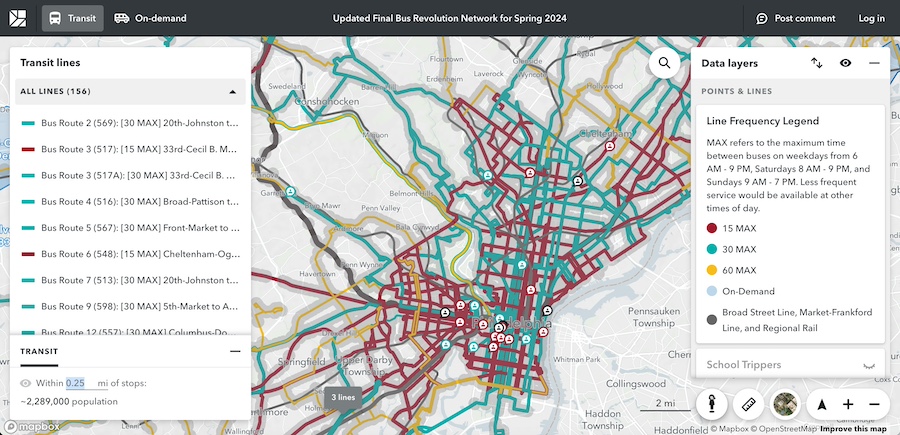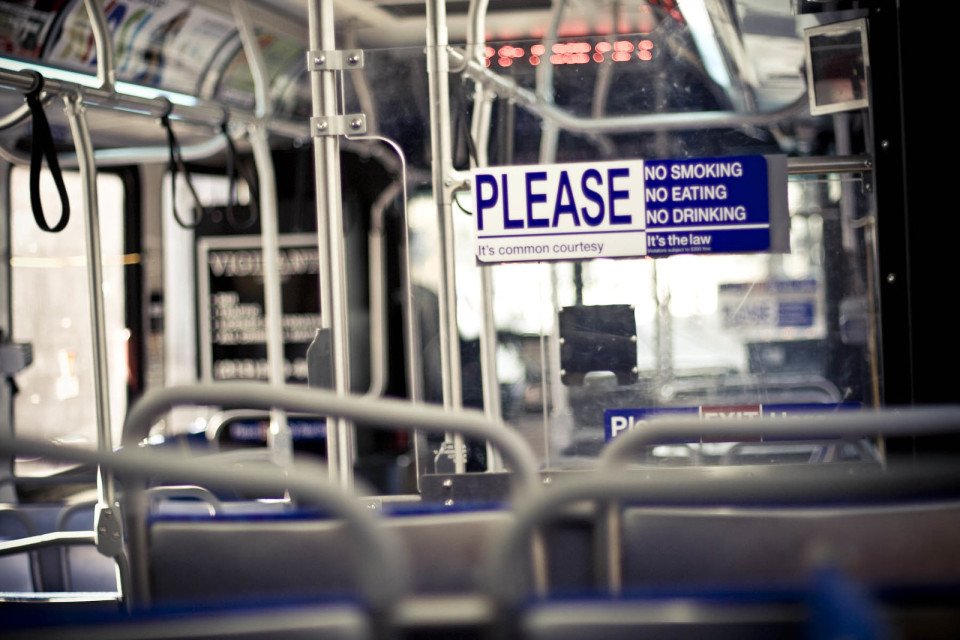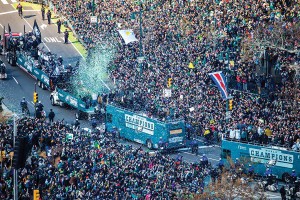Did Your Neighborhood Win or Lose the SEPTA Bus Revolution?
There’s one clear winner of SEPTA’s bus network redesign: weekend bus riders. Everywhere else, it’s win some, lose some.

How did the SEPTA Bus Revolution affect your neighborhood? / Photograph by Perry Quan
The bus network in the city of Philadelphia doesn’t look much different from the bus and streetcar system SEPTA inherited from the Philadelphia Transportation Company in 1968. And while suburban bus service has expanded since SEPTA was created in 1964, much of what suburbanites ride today is what the Philadelphia Suburban Transportation Company (“Red Arrow Lines”) and Schuylkill Valley Lines handed over to the agency in 1970.
So SEPTA had good reason to call its total rethinking of bus service in the city and suburbs a “Bus Revolution.” The revamp, launched in 2021, marked the first time since its inception that SEPTA took a big-picture look at the foundation of its transit service.
And much had changed since the 1960s. The suburbs have grown significantly while the city has shed residents. The nature and location of work has changed, first with the rise of suburban job centers like King of Prussia, then more profoundly with the onset of the COVID-19 pandemic. That event, which sent office workers home, has permanently altered the way many work — and how and when they use transit, if they still use it at all.
The Bus Revolution sought to respond to all of those changes. But there was a caveat: It had to do it for the same amount of money SEPTA now spends running the buses.
And that meant tradeoffs.
The bus network the SEPTA board approved in May brings real change and significant improvements in many areas and ways. In fact, one of the ways the changes make things better for all riders is: It came with a new system of graphically identifying bus routes by their frequency of operation. New color-coded maps, introduced while the revolution was underway, show how long one will have to wait for a bus between the hours of 6 a.m. and 9 p.m. on weekdays.
Other changes in the routes and their frequency will benefit most of SEPTA’s most frequent riders, and one will benefit just about everyone who rides a bus. But the changes had to be cost-neutral. This means that service will inevitably worsen for some riders when the network changes are implemented next year.
Here’s a breakdown of the SEPTA Bus Revolution winners and losers, based on my examination of the changes you can see on this comparison map released last fall, this detailed map of the approved network and this flipbook explaining the changes to each route. (Some minor changes were made to the network SEPTA recommended for adoption last fall, but most of what you see on the first map carried over to the second one.)
You may disagree with my categorizations, or you may find winners and losers I overlooked. And if so, feel free to send me your comments via email (address at end of article).

The final bus network the SEPTA Bus Revolution team submitted to the SEPTA Board, which approved it in May. Gray shading shows the territory within a quarter-mile of bus routes. / OpenStreetMap image via SEPTA
Winners of SEPTA’s Bus Revolution
Everyone who rides a bus on the weekend
The weekday service frequencies (or headways, in transit-speak) will also apply on weekends. Specifically, from 8 a.m. to 9 p.m. on Saturdays and 9 a.m. to 7 p.m. on Sundays. And note the hours when frequent service will apply — they extend well into the evening.
West Philly residents
Where only four of the dozen or so bus routes that pass through this part of the city now operate every 15 minutes or less, all but three will starting next year. And some, like Route 52, will run every 10 minutes or less.
Residents of Northwest Philly above the Wissahickon
Right now, only two routes serving it — Routes 18 and 23 — operate at 15-minute headways. After implementation, all but four of the 11 routes passing through Chestnut Hill, Germantown, Mount Airy and don’t-you-dare-call-it-Cedarbrook will.
Haverford, Bryn Mawr and Rosemont residents served by Route 105
Currently, this bus runs along Lancaster Avenue half-hourly to Ardmore and hourly beyond it. Half-hourly service will extend to Rosemont starting next year.
Delaware County Community College students
Route 112, which follows West Chester Pike from 69th Street Transportation Center to the campus, will get 15-minute service.
Residents of Lansdowne, Yeadon, Collingdale, Folsom, Holmes
… and other Delaware County communities served by Route 113, whose headways will shrink from hourly to every 15 minutes. Nearby Route 109, which operates at 20-minute intervals most of the day, will also become a 15-minute route.
Lansdale, North Wales and Norristown residents who live along Bus Routes 96 and 98
Both will have buses running twice as often as before: every 30 minutes on the 96, and every 15 on the 98.

Photograph by Rachel Johnson
Losers of SEPTA’s Bus Revolution
Riders whose one-seat rides have become two-seat rides
And that’s thanks to reroutings or discontinuances. The “one-seat ride” (meaning, no transfers) is the Holy Grail of transit planners. But not every rider can have one in an efficiently designed system. Street networks like the city grid in Philadelphia mean transfers are often a way of life. Instead, the aim is to minimize the time spent waiting for the next bus. The increase in 15-minute routes should accomplish this in most cases.
Cheyney University students, faculty and staff
They’ll lose regularly scheduled service when Route 120 is discontinued. The Bus Revolution recommendation book states that the Cheyney campus will be served by an on-demand microtransit service that covers it and Painter’s Crossing, but this service appears nowhere else in the recommendations, which makes me wonder if it’s going to be implemented at all.
Central Delaware County residents who use the Route 123 bus to get to King of Prussia
It’s disappearing.
Riders headed to or from destinations along Henderson Road near King of Prussia
Routes 124 and 125 will both follow South Gulph Road going forward.
Manayunk
The one bus route serving the heart of the neighborhood, Route 61 currently operates every 20 minutes during the day. The recommendations call for this route to operate at headways as long as hourly.
Riders along Route 99’s current alignment
That route passes through communities northeast of Phoenixville on its way between it and King of Prussia. But, come May, Route 99 will move southward to follow the discontinued Route 139 between these locations.
… And, Who Knows?
Residents of the on-demand service zones in the suburbs
At least in theory, having a bus or van that one can summon should be better than waiting for a bus that runs once an hour. But the service has to be designed properly and provide the same or better accessibility to other areas than the fixed routes these zones replace. We won’t know for sure whether this was accomplished until the service starts.
There will be six such zones:
- One will extend along the Trenton Regional Rail line to provide local service to the areas around the four stations from Cornwells Heights to Bristol.
- One will center on Lansdale, extending from Montgomery Mall to its east to Telford to its north.
- One will provide local service in Bristol, Levittown and the Oxford Valley Mall area.
- One will replace the Route 90 bus, which provides service on Norristown’s northwest side; it will cover all of northwest Norristown and extend to Plymouth Meeting Mall.
- One will serve the Great Valley Corporate Center and environs, with connections to Paoli and Malvern Regional Rail stations.
- And one will provide service in an area extending from Paoli and Malvern stations to West Chester, following the route of the discontinued Route 92 bus.
Residents who will have to walk further to get to the bus.
Some critics point to bus reroutings that will mean longer walks to stops for some patrons as losses. In Fishtown, for example, SEPTA is rolling Routes 25 and 73 into one, under the latter number. The combined route will follow the streets the 73 currently uses, taking service off Memphis, Norris and Palmer streets as well as part of Aramingo Avenue. While these are indeed inconveniences, changes made to improve the speed, reliability and directness of service should benefit more riders than are inconvenienced by the longer walks.
On the whole, I would say that the improvements SEPTA made to the network outweigh the sacrifices it made. But we will have to wait until next fall to see if I’m right.


